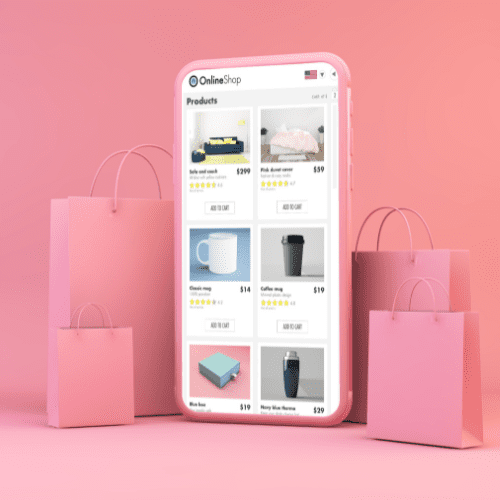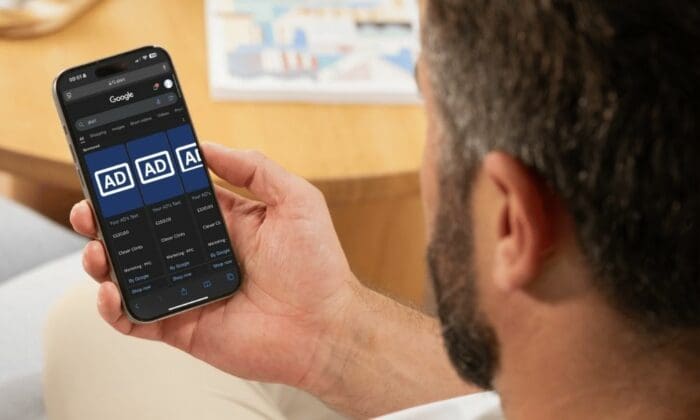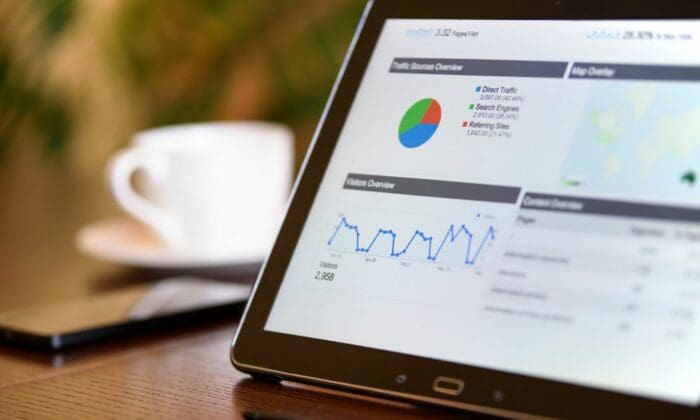Maximise Sales with Google Shopping Ads
How to utilise Google Shopping for higher ROAS.




When it comes to driving more sales online, Google Shopping Ads are a game-changer. They place your products right at the top of search results, making it easier for potential customers to discover and purchase from you.
Unlike traditional text ads, Google Shopping Ads provide a visual and engaging shopping experience, allowing users to compare prices, features, and sellers before even clicking on a product.
This high visibility and ease of comparison make them a powerful tool for e-commerce businesses looking to increase conversions and revenue.
More people are shopping online than ever before, making it harder to stand out in search results.
Simply setting up Google Shopping Ads isn’t enough. To maximise your sales, you need a well-optimised campaign that:
But how do you ensure your Shopping Ads perform at their best? Let’s break it down.
Google Shopping Ads are different from traditional text ads. They display product images, pricing, and store information directly in search results, making them highly engaging and effective for e-commerce businesses. With millions of online shoppers searching for products daily, these ads drive high-intent traffic to your store.
According to a report by DataFeed Watch, CPA (cost per acquisition) can be up to 70% lower for Shopping Campaigns in comparison to Search Campaigns.
Increased visibility: Your products can appear at the top of Google search results, depending on your bid, competition, and relevance score. In some cases, Shopping Ads also appear on the right-hand side or in the ‘Shopping’ tab.
Higher conversion rates: Shoppers see the product image, price, and store name before clicking, leading to better-qualified leads.
Broader reach: Shopping Ads can appear across Google Search, Google Images, YouTube, and the Google Display Network.
Competitive advantage: If optimised correctly, Shopping Ads can outperform competitors’ text ads.

Your product feed is the backbone of your Google Shopping Ads. Google’s Merchant Center guidelines emphasise that well-structured feeds can increase ad performance by 20% or more.
Use clear, keyword-rich product titles and descriptions: Including relevant search terms helps your products appear for the right queries.
Include high-quality images: Professional, high-resolution images enhance click-through rates.
Ensure pricing and availability are always accurate: Outdated information can lead to poor user experiences and ad disapprovals.
Categorise your products correctly: Proper categorisation ensures Google matches your products with the right searches.
Tools like Ahrefs and SEMrush don’t directly impact Shopping Ads rankings (which are determined by bidding and product feed quality), but they help identify high-performing keywords that can improve your product titles and descriptions for better search visibility.
Using third party tools to carry out industry research is a powerful way to align your strategy with readily available data.
Some SEO tools for digital marketing to consider include:
Google Keyword Planner: Identify the best search terms for your products.
Ahrefs: Analyse competitors and find high-performing keywords.
SEMrush: Track rankings and optimise your digital marketing strategy. A well-optimised product feed, coupled with insights from these SEO software solutions, can help you refine your ad strategy and improve visibility.
Google’s smart bidding strategies can help you get the most out of your budget. Smart bidding uses machine learning to increase the efficiency of your campaigns, simplifying campaign management based on your targets.
Google’s AI-driven smart bidding strategies analyse data in real-time, looking at user intent, device and past browsing behaviour. Their automated model then uses these insights to adjust bids and maximise conversions based on their learnings.
You could consider using:
Target ROAS (Return on Ad Spend): uses Google’s machine learning algorithms to adjust bids in real time, prioritising conversions that align with your revenue goals.
Maximise Clicks: A great option if your goal is to drive more traffic to your website.
Enhanced CPC (Cost-Per-Click): A Google Ads strategy that automatically increases or decreases bids depending on how likely a user is to make a purchase.
Manual CPC: This gives you full control over bid adjustments but requires constant monitoring.
While paid software provides in-depth analysis, there are plenty of free tools that can provide insights to enhance Google Shopping performance. Some of the best options include:
Google Search Console: Monitor your website’s organic search presence.
Google Analytics: Track user behaviour and ad performance.
Screaming Frog: Identify technical SEO issues on product pages.
Google Trends: Gain insights into trending products and seasonal demand shifts.
Using a combination of free and paid SEO tools for digital marketing can help you fine-tune your strategy and get the best results.

Optimising your product pages is crucial for converting Shopping Ads traffic into sales. Key areas to focus on include:
Fast-loading pages: Slow load times can lead to high bounce rates. Use Google PageSpeed Insights to analyse and improve speed.
Mobile-friendly design: A large portion of shoppers browse and buy on mobile devices.
Clear CTAs (Calls to Action): Ensure buttons like “Add to Cart” or “Buy Now” stand out.
Detailed product descriptions: Highlight key features, specifications, and benefits.
Customer reviews and ratings: Positive reviews build trust and encourage conversions.
A successful digital marketing strategy requires ongoing optimisation. As part of ongoing management, you should look for patterns in conversions, click-through rates, and cost-per-acquisition to make data-driven adjustments.
We recently reduced cost-per-acquisition by over 60% for an online labels retailer by refining their product feed and adjusting bids based on Google Ads insights.
Analyse search term reports: Identify high-performing keywords and negative keywords to
refine targeting.
A/B test ad creatives: Experiment with different images, titles, and descriptions to see what
resonates best with your audience.
Adjust bids based on performance: Increase bids for top-performing products and decrease
bids for underperforming ones.
Monitor competitor activity: Google Shopping already factors in price competitiveness when determining which products appear in ad placements. However, using Google’s Price Competitiveness Report in Merchant Center can help you adjust pricing strategies based on market trends.
For advanced advertisers, one of the most effective ways to increase your ROI and maximise the impact of your Google Shopping Ads is by leveraging audience targeting. This allows you to refine your ad targeting beyond basic keywords and focus on the specific interests, behaviors, and characteristics of the people who are most likely to convert.
Google’s Audience Targeting feature allows you to focus your ads on specific user segments based on their past behaviors, demographics, and interests. Rather than showing your products to anyone searching for broad keywords, you can target people who have already shown an interest in products similar to yours or are in the right stage of the buyer’s journey.
This can significantly increase the chances of a conversion while reducing wasted spend by excluding irrelevant audiences.
Google offers a variety of targeting options that can help you fine-tune your approach:
Google Shopping Ads can be a powerful way to increase sales, but success doesn’t happen overnight. By optimising your product feed, implementing smart bidding strategies, and using SEO software, you can improve ad performance and drive more revenue. Keep testing, refining, and adapting your approach to stay ahead in the competitive digital world.
Our team at Clever Clicks Digital has helped multiple eCommerce brands increase Shopping Ad ROAS by up to 450% through data-driven optimisation. If you’re looking to scale your sales with a tailored paid strategy, get in touch today.

SEO vs GEO: The Future of Search Optimisation
Read full blog
Learn how to start a successful YouTube channel for your business in 2025 from content strategy and branding to optimisation tips that boost growth and visibility.
Read full blog